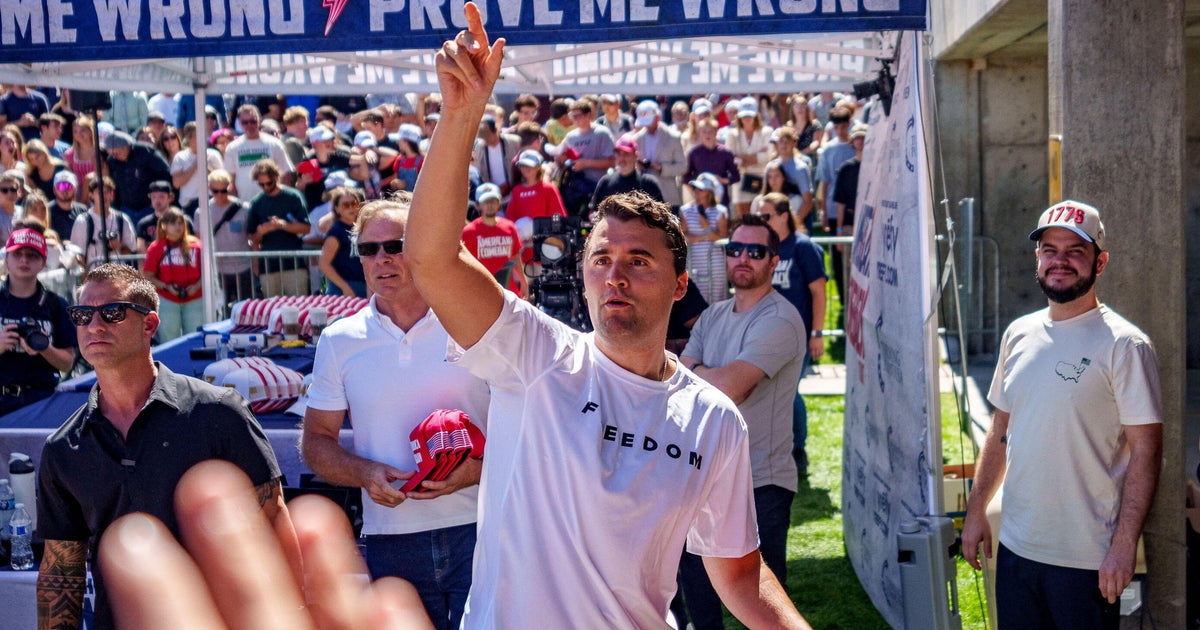It’s a bipartisan problem in a country beset by polarization: Since the start of 2025, political violence has killed, injured or threatened conservative and liberal political figures alike.
This month, a pardoned Capitol rioter was arrested for allegedly threatening to “eliminate” House Minority Leader Hakeem Jeffries at an event in New York City, and a Minnesota man was charged with offering a $45,000 bounty for Attorney General Pam Bondi, the latest in a jarring trend of threats and violent acts against political figures.
In September, conservative activist Charlie Kirk was fatally shot on a Utah college campus. Afterwards, the alleged shooter told his roommate, “some hate can’t be negotiated out,” according to court documents.
Three months earlier in Minnesota, Democratic state Rep. Melissa Hortman and her husband were killed at home, and state Sen. John Hoffman and his wife were shot on the same night. Two months before that, Democratic Pennsylvania Gov. Josh Shapiro’s home was set on fire while he and his family slept.
Also this year: Two staff members of the Israeli Embassy in D.C. were fatally shot, a Republican Party of New Mexico office was targeted in an arson attack, two Immigration and Customs Enforcement facilities were shot at and a California fertility clinic was bombed, among other violent incidents.
And before that, President Trump survived two attempts on his life and former House Speaker Nancy Pelosi’s husband was beaten with a hammer at home. Supreme Court Justice Brett Kavanaugh’s would-be assassin walked in front of his home, but then had second thoughts, called an emergency line and admitted traveling to Maryland to kill a Supreme Court justice.
The trend has drawn a divided response. Mr. Trump and his allies have accused the “radical left” of fomenting violence, while Democrats argue that right-wing extremism is a problem, too.
But while some of these perpetrators may have claimed political rationales for their violent acts, it’s hard to argue any of them were adherents to a cohesive political cause. They were mostly lone actors driven by personal gripes, researchers who study political violence say — so some experts suggest the frame of partisan politics may not be the best way of understanding the problem.
“The rush to assign blame to the traditional binary of left versus right politically, I think, is an exercise in futility,” said Luke Baumgartner, a research fellow at George Washington University’s Program on Extremism, “because it’s much more complicated than that a lot of times.”
“Salad bar extremism”
There’s some research on the political motives of violent acts. One report by the Center for Strategic and International Studies found right-wing terrorism has been more common than left-wing terrorism in the U.S. over the last decade, but this year, left-wing incidents are on track to take the lead for the first time in over 30 years.
It’s difficult to draw sweeping conclusions from this report because the total number of acts of terrorism has dropped. From 2016 through last year, there were an average of 22.7 attacks and plots from the right and four from the left annually, while in the first half of this year, there were five left-wing incidents and just one on the right.
Many people who carry out political violence have views that are tough to pin down, or they hold a mix of beliefs that don’t align with either side of the partisan divide.
Take the bombing at a Southern California fertility clinic that injured four people in May. Authorities say the perpetrator — who died in the attack — appeared to believe in “anti-natalism” and “pro-mortalism,” a set of obscure philosophies that argue it’s wrong to bring children into the world against their will, or that view death as preferable to life.
“Not only are the people carrying out this violence not stooges of a political party or affiliated with the political parties, they’re not really affiliated with the mainstream political ideologies that either espouses,” said Kieran Doyle, North America research manager at the Armed Conflict Location & Event Data Project, which tracks political violence globally.
Some violent actors hold “a hodgepodge of different, sometimes apparently contradictory, political motivations,” said Doyle, who called that phenomenon “salad bar extremism.”
In some cases, the perpetrators’ motives are hazy. Baumgartner pointed to Thomas Matthew Crooks, who shot at Mr. Trump during a rally in Pennsylvania last year, grazing the then-presidential candidate’s ear and killing a rallygoer before he was fatally shot by the Secret Service. The 20-year-old’s motives and political leanings are shrouded in mystery — he searched online for information about both Mr. Trump and former President Joe Biden, sources familiar with the matter told CBS News last year.
And in other cases, perpetrators of violence have no obvious ideology at all.
FBI Director Kash Patel testified earlier this month that a large share of the bureau’s domestic terror probes are focused on a category called “nihilistic violent extremism,” which he defined as violent acts that are “motivated by a deep hatred of society.”
“The reasons why they’re carrying out these attacks are not inherently political,” Baumgartner said of nihilistic extremists, which he said includes some recent school shooters in Nashville and Minneapolis. “They are not doing it to further some political, religious, ethnonationalist … cause. They’re just doing it for the sake of committing an act of violence.”
Violence dominated by lone wolves with personalized motives
Perpetrators of violence also rarely belong to organized groups with clear goals and motives, experts say.
Cionadh Raleigh, CEO of the Armed Conflict Location & Event Data Project, told CBS News that violent acts by groups like far-right militias are on a long-term decline. “There are many groups, but they’re very inactive,” she said.
But killings or assassinations by lone actors “have been consistently high in the States now for decades,” said Raleigh.
Baumgartner said the only recent high-profile act of political violence with an obvious link to a wider group was the July shooting at an ICE facility in Alvarado, Texas. More than a dozen people have been arrested in connection with that shooting, and authorities say many of the defendants harbored anarchist views or beliefs in line with antifa, a loosely defined left-wing movement. One of the suspects has been described as a cult-like leader.
But in general, Baumgartner said, political violence is “primarily conducted by individuals who have a highly personalized and individualized ideology, if you can call it that.”
In some cases, these lone actors are “deeply immersed in niche online subcultures” and have grown alienated from society for various reasons, he said. He argues that profile fits the Trump rally shooter Crooks, alleged Kirk shooter Tyler Robinson and Dallas ICE shooter Joshua Jahn.
“They end up basically becoming irony-poisoned, and anything that is transgressive or subversive and goes against social mores is what they find appealing,” he said.
Political threats on the rise
The vast majority of Americans reject political violence — one CBS News poll released earlier this month found 86% of Americans believe it’s unacceptable.
But threats against public officials appear to be on the rise.
The U.S. Capitol Police is on track to investigate over 14,000 possible threats against lawmakers and their offices this year, Chief Michael Sullivan said last month, up from 9,474 in an already busy 2024. And the U.S. Marshals Service investigated 562 threats against federal judges in the 2025 fiscal year, up from 509 in 2024 but down from 630 in 2023.
Lower-profile local politicians haven’t been spared either. Princeton University’s Bridging Divides Initiative recorded almost 300 instances of threats and harassment against mayors, city councilors and other local officials in the first half of 2025, up 9% year-over-year.
Roudabeh Kishi, the initiative’s chief research officer, said local officials “across the spectrum” have faced threats and violence — including those who hold nonpartisan offices.
She believes politicians hold some responsibility to cool hostilities — including by avoiding baselessly casting blame.
“We really need leaders across the political spectrum to refuse calls for retribution [and] refrain from further normalizing violence,” she said. “Blaming whole groups of people or whole sides of the political spectrum is what really risks broader violence.”


